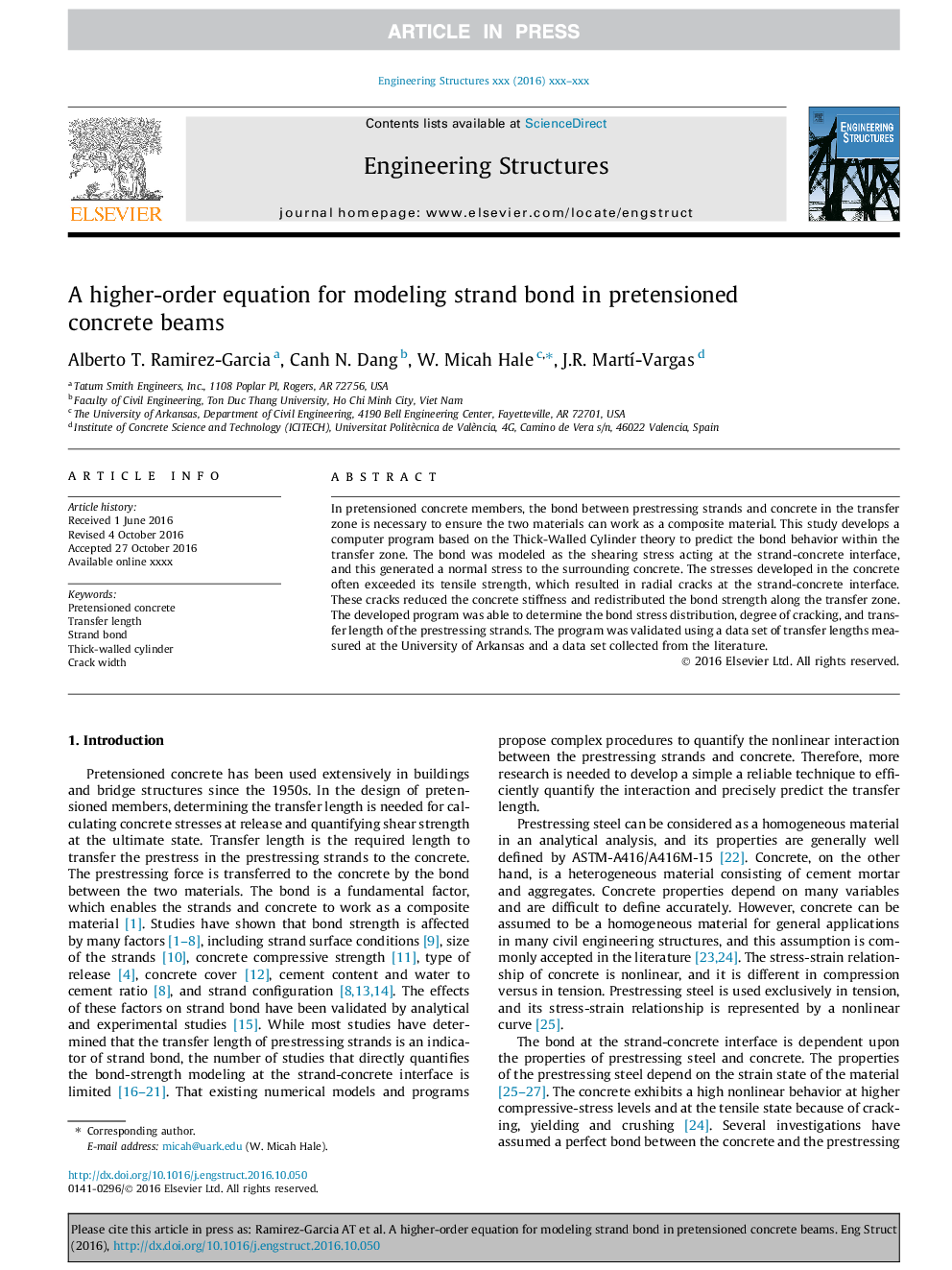| Article ID | Journal | Published Year | Pages | File Type |
|---|---|---|---|---|
| 4920602 | Engineering Structures | 2017 | 17 Pages |
Abstract
In pretensioned concrete members, the bond between prestressing strands and concrete in the transfer zone is necessary to ensure the two materials can work as a composite material. This study develops a computer program based on the Thick-Walled Cylinder theory to predict the bond behavior within the transfer zone. The bond was modeled as the shearing stress acting at the strand-concrete interface, and this generated a normal stress to the surrounding concrete. The stresses developed in the concrete often exceeded its tensile strength, which resulted in radial cracks at the strand-concrete interface. These cracks reduced the concrete stiffness and redistributed the bond strength along the transfer zone. The developed program was able to determine the bond stress distribution, degree of cracking, and transfer length of the prestressing strands. The program was validated using a data set of transfer lengths measured at the University of Arkansas and a data set collected from the literature.
Related Topics
Physical Sciences and Engineering
Earth and Planetary Sciences
Geotechnical Engineering and Engineering Geology
Authors
Alberto T. Ramirez-Garcia, Canh N. Dang, W. Micah Hale, J.R. MartÃ-Vargas,
